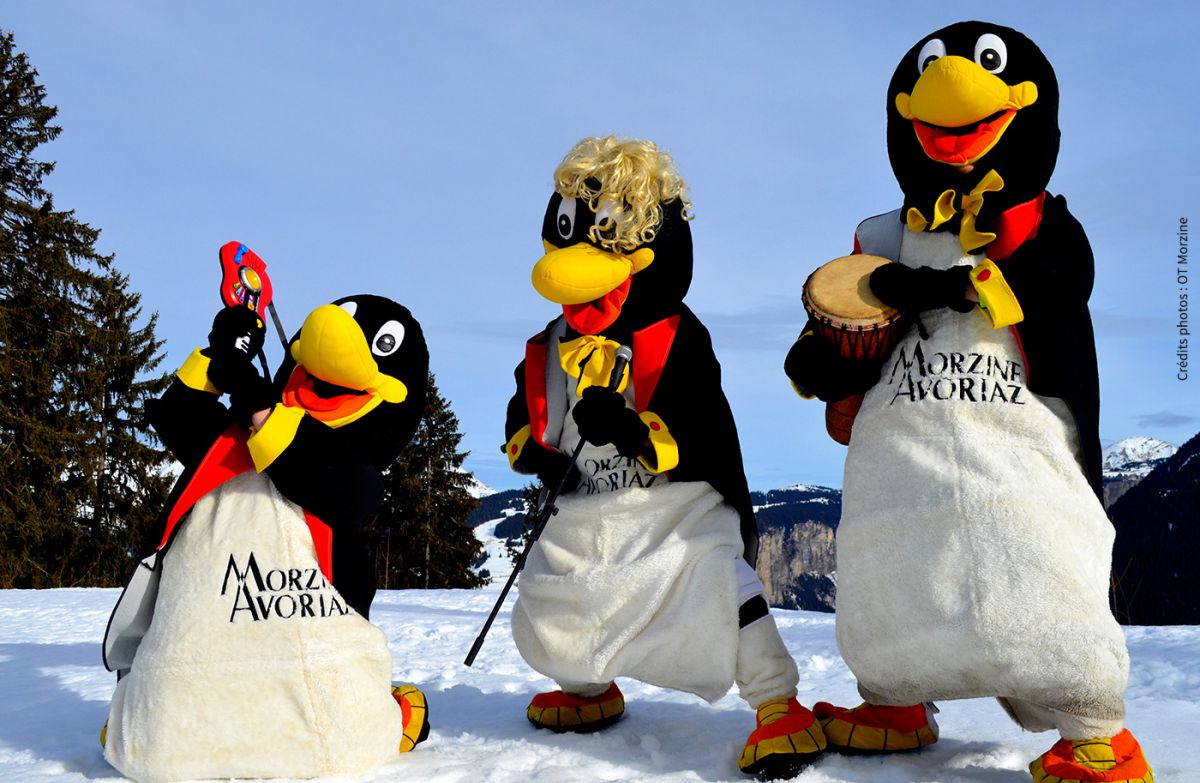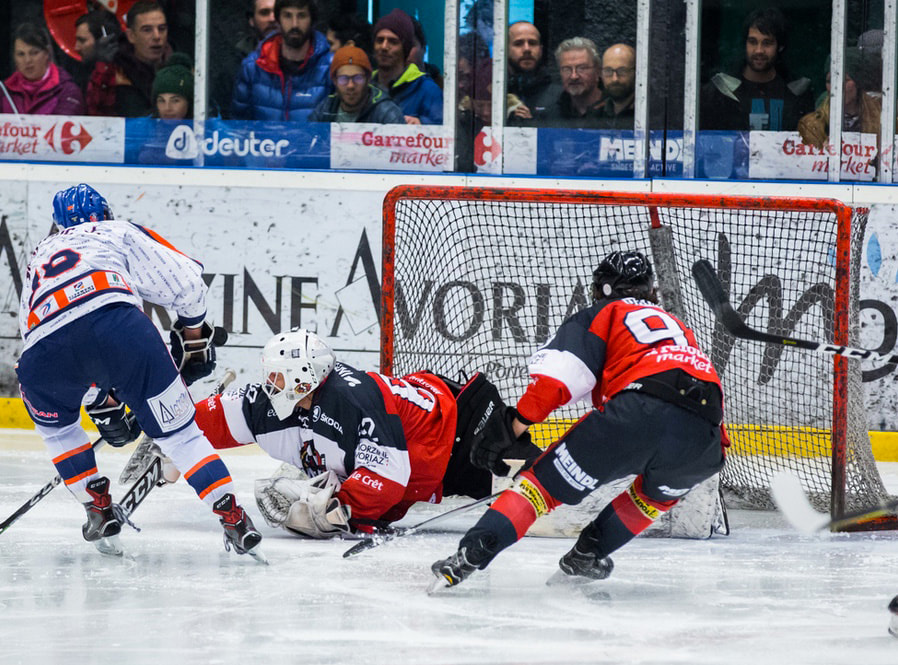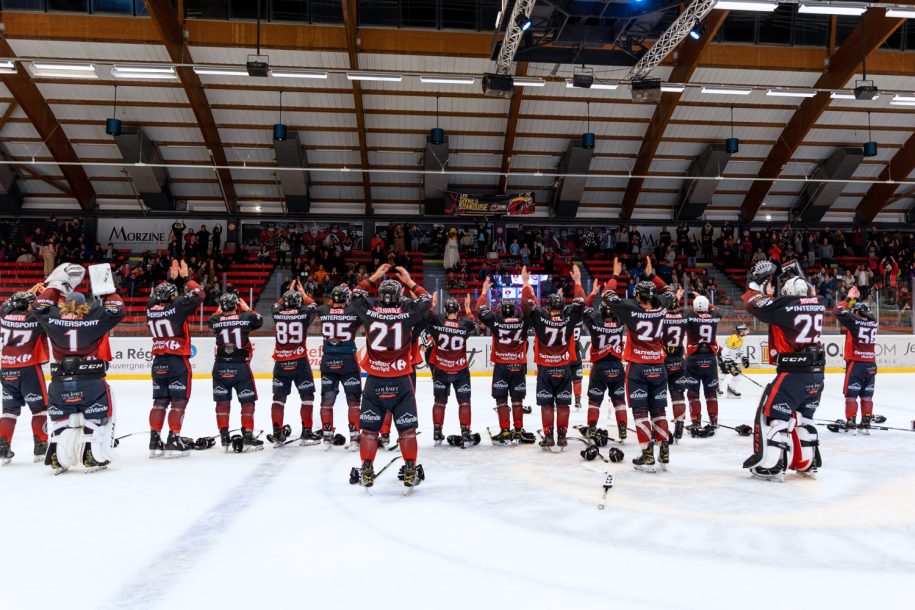Les Pingouins is the affectionate name that the Morzine-Avoriaz ice hockey team go by. In the less affectionately named Skoda arena, ice hockey matches take place throughout the winter season. The ice hockey rink is impressive for a village of Morzine’s size and has a capacity of 1280. It’s a great opportunity for an alternate night out to cheese-filled restaurants. They have their own bar too, to help keep your throat lubricated for all that cheering!
In the early 1930s natural ice rinks on the region’s lakes began to be used for skating, and subsequently hockey sticks clashed, blades scraped the ice and clans were formed. Morzine’s hockey club is one of the oldest in France, founded by seven local Mozinois in 1963. The penguin became the mascot because the club’s first trainer offered a tiny felt penguin to François Baud (a surname synonymous with Morzine) to take with him to the World Ski Champs in Aspen. When he returned the Penguin slowly but surely became the mascot across all of Morzine’s sports clubs, from swimming to skiing, tennis to curling.

As a sport in general, ice hockey was first played indoors in Montreal, Canada in 1875. Professional ice hockey began around 1900, with many elements, such as the length of the rink and size of the puck, remaining the same to this day. France adopted Canada’s rules in the early 1900’s and the sport was first included at the Summer Olympics in 1920 in Antwerp, before being played outdoors at the Winter Olympics in Chamonix in 1924.

Whilst it’s quite easy to just go to a game, soak up the action, join in with the chants and look on with bemusement at the skill and speed of the players, if you’re a novice viewer and would like an idea of the rules, here’s a beginner’s/dummies guide.
In hockey, there are six players on each side on the ice at any one time, one of which is the goalie. Each team includes 20 players in total. As ice hockey is a very intense sport, players are often only on the ice for a minute at a time before being substituted. Changing the players is called a ‘line change’ and often takes place during stoppages in the game. When players are substituted during play, it is called changing ‘on the fly’.

The boards surrounding the ice help keep the puck in play and they can also be used as tools to play the puck. Players are permitted to ‘bodycheck’ (driving the shoulder, upper arm, hip and elbow, equally, into the opponent to separate them from the puck) opponents into the boards to stop progress.
Infractions of the rules lead to a play stoppage whereby the play is restarted with a ‘faceoff’. Two players face each other and an official drops the puck to the ice, where the two players attempt to gain control of the puck. Some infractions result in a ‘penalty’ on a player or team. In the simplest case, the offending player is sent to the penalty box and their team must play with one less player on the ice for a designated time.

A game lasts 60 minutes in total, which is split into three 20 minute periods. Between the periods, there are 15 minute breaks. At the end of each period, teams switch sides. The clock stops whenever the puck is not on the ice. Games typically take two and a half hours.
A penalty shot is awarded to a player when the illegal actions of another player stop a clear scoring opportunity, most commonly when the player is on a breakaway. A breakaway is when a player with the puck has no defending players between themselves and the opposing goal, except for the goaltender, leaving him free to skate in and shoot at will.
When the score is tied at the end of the 60 minutes standard game time, there is overtime. Overtime is played in a 3 on 3 scenario, first goal wins. If after the overtime a goal has not been scored, the game moves into a shootout. This consists of three players from each team taking penalty shots. After these six total shots, the team with the most goals is awarded the victory. If the score is still tied, the shootout then proceeds to ‘sudden death’, where the first goal gets the victory!

The remaining home games of the season are tonight, 22 March, 1 April and 4 April and take place from 8:30-11:30pm at the Skoda Arena (502 Route du Palais des Sports).
If you’re looking to sound like a pro at a game, then try using some of these slang hockey terms at the rink:
Biscuit: the puck
Chirp: to trash talk the opposing team
Face wash: when a player rubs the palm of their glove in an opponent’s face simply to annoy them
Gino: a goal that is scored
Muffin: a shot that should have been stopped after wavering back and forth in the air all the way to the net
Sieve: a goaltender who allows a lot of goals, usually referred to as being full of holes
Yard Sale: when a player gets hit so hard that he loses his equipment (stick, helmet, or gloves) and they’re left on the ice after the play
Read an interview with the current manager of the team by our partners at Morzine Source Magazine here.
So book an early dinner during your stay at Hotel du Lac then make your way down into Morzine (ask reception for help with taxis) for a night full of action and cheer!

